In India, as in other emerging economies, the physical development of the city is influenced by the everyday practices of its people. The Urban spaces are continually transformed by social, cultural, religious, political, economic and other practices. Currently, these practices intermingle with each other and with the streets of the city in a random manner. The formal plan of the city finds it difficult to account for these everyday practices due to their changing nature and because they have not been sufficiently documented or analysed.
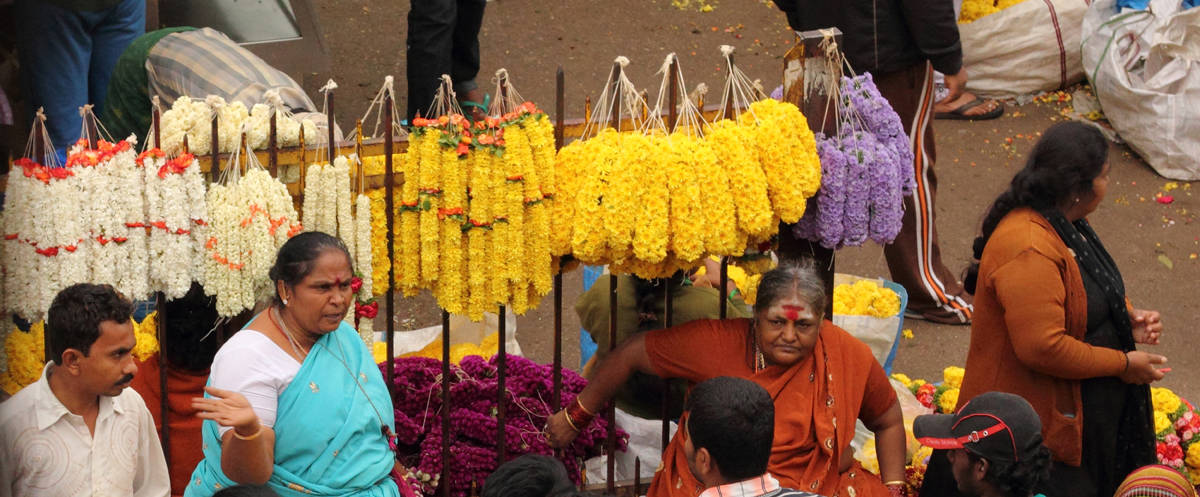
Flower vendors at the Street bazaar outside the K.R.market in Bangalore
To understand this phenomenon, a series of workshops with architecture students comprising of both conceptual and experiential learning in the Street could be a good starting point. In this article, I share the details of the first such workshop held at Dakshinachitra, Chennai from 15th to 18th aug 2013. The focus of this 4-day workshop was to ascertain the nature and characteristics of the everyday urban practices and to investigate how they individually and collectively contribute to the making of the city. The key question the workshop asked was:
How can we bring about small changes in our perception and that of others through documenting ‘how people use street space’?
The workshop consisted of sessions that helped look at streets and neighbourhoods differently. It included lecture-presentations, walking tours and discussion sessions.
The workshop began with the screening of William Whyte’s film ‘The Social life of small urban spaces’. A film from a different context and a different time, a film made in the 70s, it helped know about at least one way in which urban space has been documented and analysed. It showed that ‘Observing people’ is the FIRST STEP. The discussion following the screening revolved around observations made in the Indian context. At different times of the day, the street performs different functions. It is sometimes a marketplace, sometimes a vehicular road and sometimes a site for a cultural festival or a religious procession.
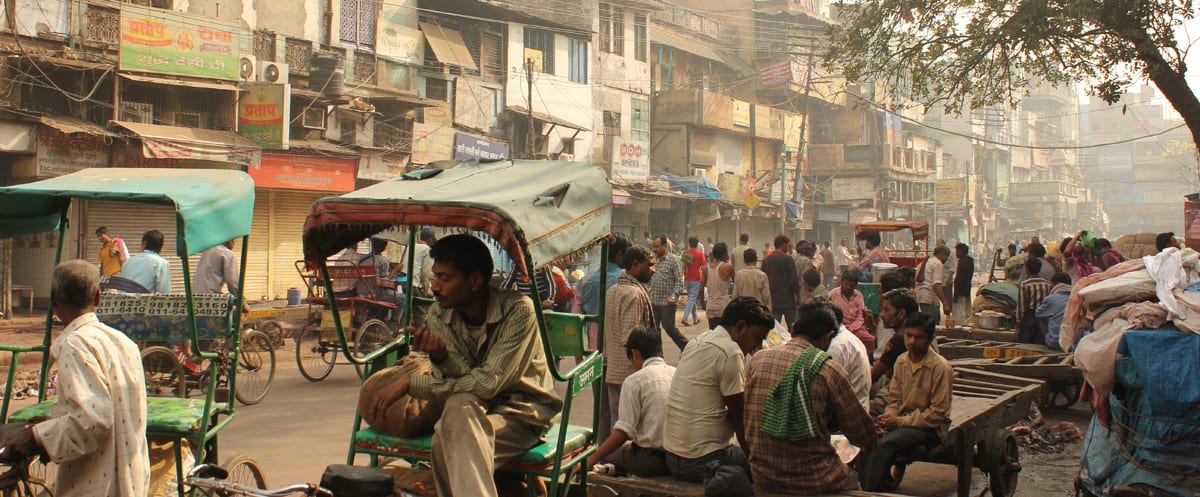
A morning at Chandni Chowk in Delhi
The film had shared the findings of Whyte’s extensive mapping of how people use the plaza at the Seagram building in New York. This study was initiated when it was found that urban space was being underused and it would be useful to find out why. In the context of the Indian city, it is overuse that we need to understand. Is the multiple usage pattern in our streets an outcome of dearth of urban space or is the multiplicity at the core of our settlements, a reflection of the many layered Indian way of life?
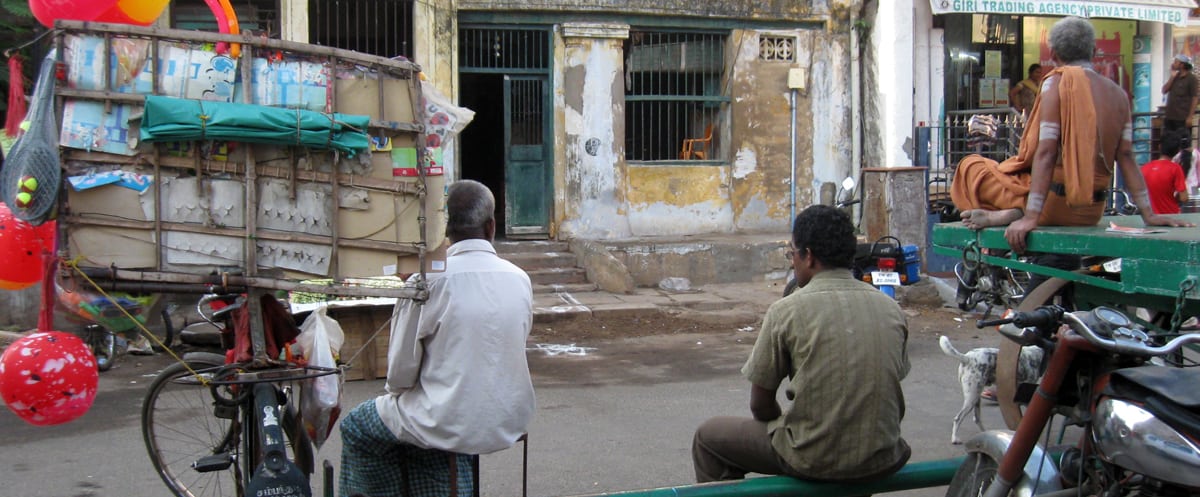
In a small lane near the Kapaleeswarar temple at Mylapore in Chennai
Later that day, Sriram V. (Writer & Entrepreneur) made an insightful presentation about Georgetown and lead a walking tour the next day to this old neighbourhood of Chennai. Although the streets of Georgetown are lined with the most interesting heritage houses, marketplaces, temples and parks, it is today a congested and dilapidated part of the city. It is similar in so many ways to the Chickpete area in Bangalore. Sriram spoke of the street as a ‘performative space’. In the past, people congregated for devotional singing in the open spaces that were within temples and these gathering spaces often spilled onto the streets. Gradually, the congregations took up less and less of street space as more formal spaces for religion were built. So, religious activity moved from being within an informal porous space into the formal walled space. Our key lesson from this was that as Architecture lost its porosity and adaptability, so did the Street.
Pramod Balakrishnan (Architect) made a presentation that began with discussing traditional streets and the many activities within them. It looked at how some of these street characteristics could be incorporated into the design of gated communities today. I made a presentation on how people use Streets on an everyday basis, discussing two case-studies in Bangalore: the Groundnut Fair in Basavanagudi and the Russell market urban precinct.
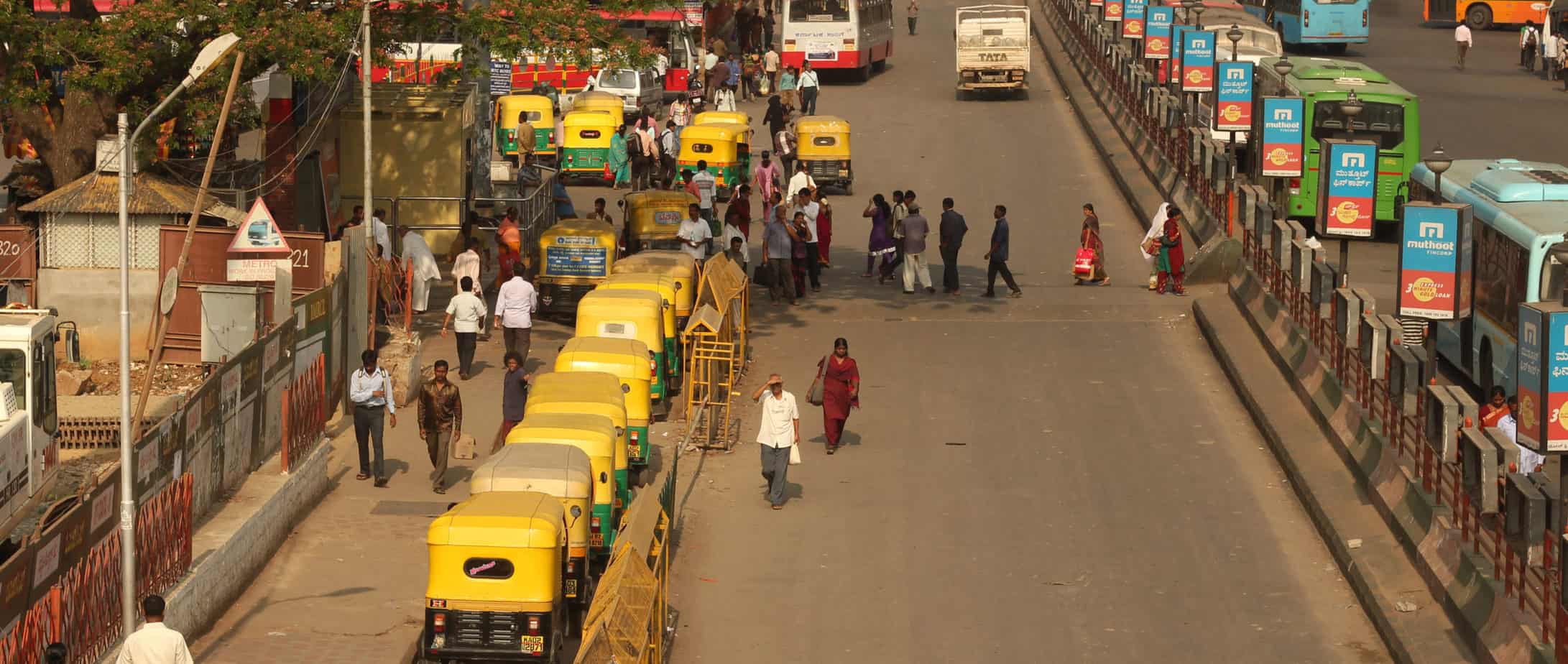
An autorickshaw stand near Majestic Bus stand in Bangalore
Mahesh Radhakrishnan (Architect) spoke about the Street as Public space. He presented different types of streets with a broad stroke understanding of their composition. This was followed the next day by a ‘Public Space Public Life survey’ that he lead at Besant Nagar where the participants explored the various parameters defining the qualitative aspect of streets. A session by Benny Kuriakose (Conservation architect) discussed ‘Wayfinding’ for the Streets in Muziris, a town in Kerala of great archaeological relevance. This session began with how the different phases of the heritage project were planned and highlighted the approaches to signage design. A.Srivathsan (Senior Deputy Editor, The Hindu) in his presentation discussed the ‘grid’ in the planning of cities and how it had changed the culture of the street. He argued that if the street had to continue to be a vibrant place and a site also for the social and cultural life of the people, then city planners would need to consider low-density, low-rise developments as the future of the city.

Morning street activities: Reading the newspaper, Selling flowers and Waiting for the bus – near Majestic in Bangalore
In the Discussion sessions that followed the walking tour and the Street survey, the Participants pointed out that the behaviour of the autorickshaws on the street was a phenomenon peculiar to the Indian street and had to be taken into account in planning a street. Initially, the recommendations for the street consisted of ‘provision of signage’ or ‘increase in number of pedestrian crossings’. Later, we realised that if we were to focus on what we see, we would know that the problems of the Indian street must find their own solutions and not necessarily rely on a western model and on what we know “should be there”.
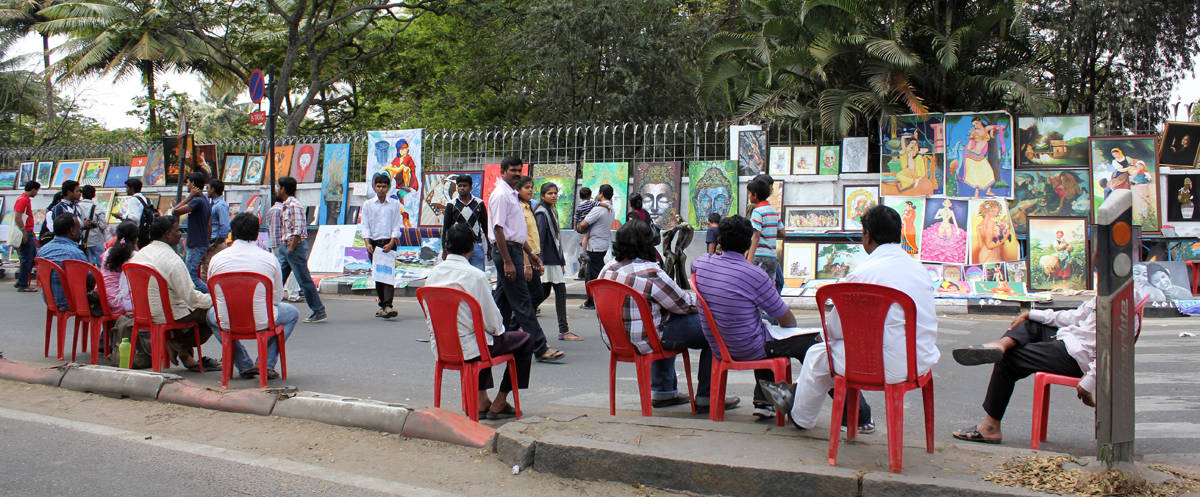
The Chitra Santhe, the annual art fair organised by the Karnataka Chitrakala Parishath on Kumara Krupa road in Bangalore
The idea of this workshop was to break away from an Architectural and Urban design training that draws primarily upon western examples. John Berger points out in his book ‘Ways of Seeing’ that the relationship between what we know and what we see is never settled. The purpose of the ‘Life in the Streets’ workshop was to simply see what happens on the street without being influenced by “what we know”. If we were to put aside what we know as the norms for a good street example elsewhere in the world and were to think about the street in front of us, it was possible that our design response would differ. It was our first step.
Some of the discussions that began at the Streets workshop now continue on facebook. If you’d like to join in, do check out: https://www.facebook.com/groups/lifeinthestreetsindia/